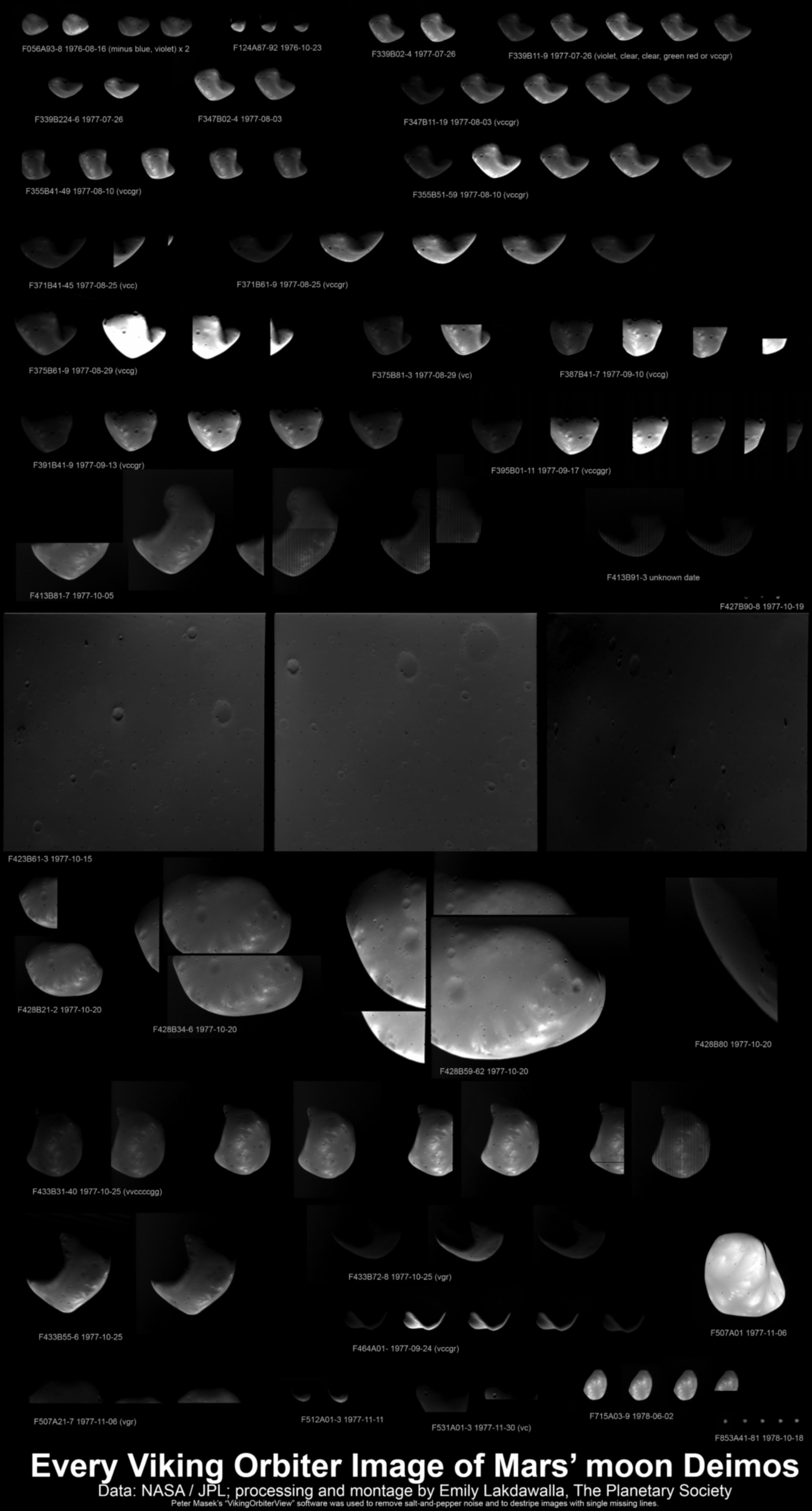Emily Lakdawalla • Apr 16, 2018
Moon Monday: Deimos
There are not very many good pictures of Deimos. Here's a new Viking composite that I just put together. What a weird little world, shaped like a lost baby molar, with its flat or even concave south pole.

The outer and smaller of Mars' two moons is really, really tiny, only 15 kilometers across at its widest point. (That makes it similar in size to the asetroid Gaspra, Pluto's moon Kerberos, and smaller than any of the lumpy moons of Saturn for which we have good photos from Cassini except the even smaller Methone.) It orbits close to Mars, only about 20,000 kilometers above the surface, but it's still far from any of the orbiters that we have mapping Mars from their low circular orbits. So the best pictures that we have of Deimos are still the ones from Mariner 9 and the Viking orbiters. (Viking has more detail, but Mariner 9 got the far side.)
It was pretty easy for me to find the data for this one because, several years ago, I made myself a cheat sheet: a summary of all the Viking orbiter images of Deimos. This is it; this is the data set. There may be a few other images but they're all tiny. You can see the original images for the composite above in the third row on the left. Now that I have this summary, I can grab a set of images and have fun processing without going back into the Planetary Data System. Any of you could, too -- have at them!

I posted some processing notes on Twitter:
Because I have this composite (posted here: https://t.co/72JCiJa227 ) it's easy for me to grab sets to try to make new color composites. The color pic I posted is made of a clear, a red, and a green-filter image. pic.twitter.com/QjOPH7eYX6
— Emily Lakdawalla (@elakdawalla) April 16, 2018
There are still some color fringes, especially at the edge of the moon on the left side, because they don't all align perfectly. To be completely honest, I just got out the paintbrush and painted that orange streak black. Sometimes there's no option. pic.twitter.com/nhNPx4Cm55
— Emily Lakdawalla (@elakdawalla) April 16, 2018
And then I subjectively adjust the levels of the red, green, and blue channels to give Deimos the reddish color of the very space-weathered body that it is. So this is an art project, not a scientific representation, but one that's meant to be representational. pic.twitter.com/dO0iEH4yO9
— Emily Lakdawalla (@elakdawalla) April 16, 2018
Support our core enterprises
Your support powers our mission to explore worlds, find life, and defend Earth. You make all the difference when you make a gift. Give today!
Donate

 Explore Worlds
Explore Worlds Find Life
Find Life Defend Earth
Defend Earth

